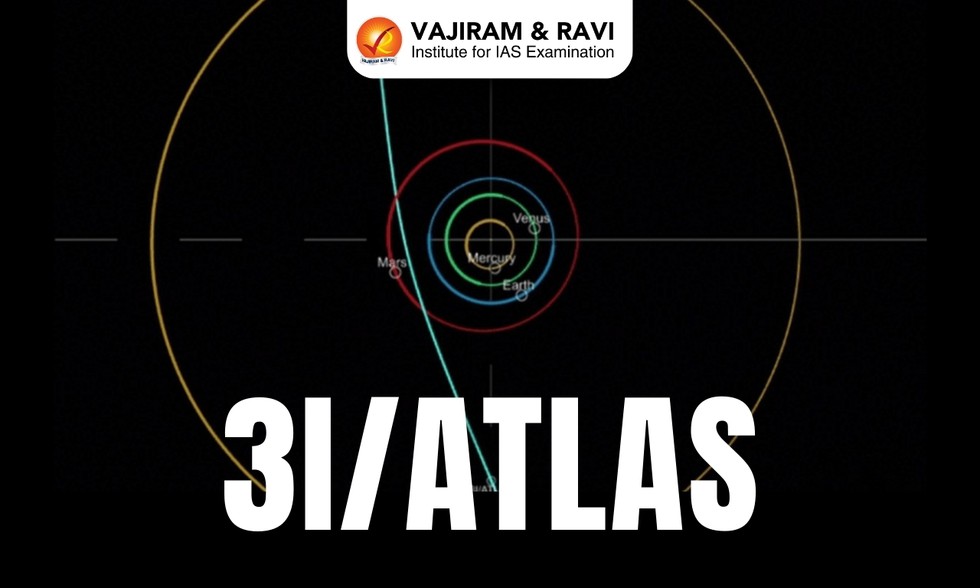About 3I/ATLAS
- It is an interstellar comet, likely to be the oldest comet ever observed by scientists, potentially predating the formation of the solar system by over 3 billion years.
- Its identification as an interstellar object was based on its highly elliptical orbit, and fast velocity through space, travelling at 57–68 km/s relative to the Sun.
- The comet’s trajectory traces back to the direction of the constellation Sagittarius, suggesting its origin lies far outside our solar system, possibly from the Milky Way’s thick disk.
- Its orbit is hyperbolic, which means it will pass once through the solar system and never return. It will exit the solar system permanently after a brief interaction with the Sun.
- Closest approach to Earth: About 270 million km.
- Closest approach to the Sun: Around 210 million km, expected on October 29–30, 2025, slightly within Mars’s orbit.
Physical Characteristics and Observations
- 3I/ATLAS is confirmed to be an active comet, with a visible coma, a cloud of ice particles and dust surrounding the nucleus.
- As it nears the Sun, it is expected to develop a tail, a characteristic cometary feature formed by solar heating.
- Photometric analysis shows a reddish hue, and its spectral slope (~1.3% per 100 nm) suggests the surface may be rich in complex organic compounds or water ice.
- The nucleus is estimated to be 10–30 km wide, making it larger than previous interstellar visitors:
- 1I/ʻOumuamua (2017)
- 2I/Borisov (2019)
- Its composition and rotation period are under active study using various ground-based telescopes
About Comets
- Comets are icy celestial bodies composed of frozen gases like water, ammonia, methane, and carbon dioxide, mixed with rocky and metallic dust.
- Comets have highly elliptical orbits, unlike the near-circular orbits of planets.
- Short-period comets originate in the Kuiper Belt, and long-period comets come from the distant Oort Cloud (located between 5,000–100,000 AU from the Sun).
- As they near the Sun, comets heat up and release gases, forming a coma and sometimes a tail.
- Halley’s Comet, one of the most famous comets, visits Earth every 76 years, last seen in 1986.
